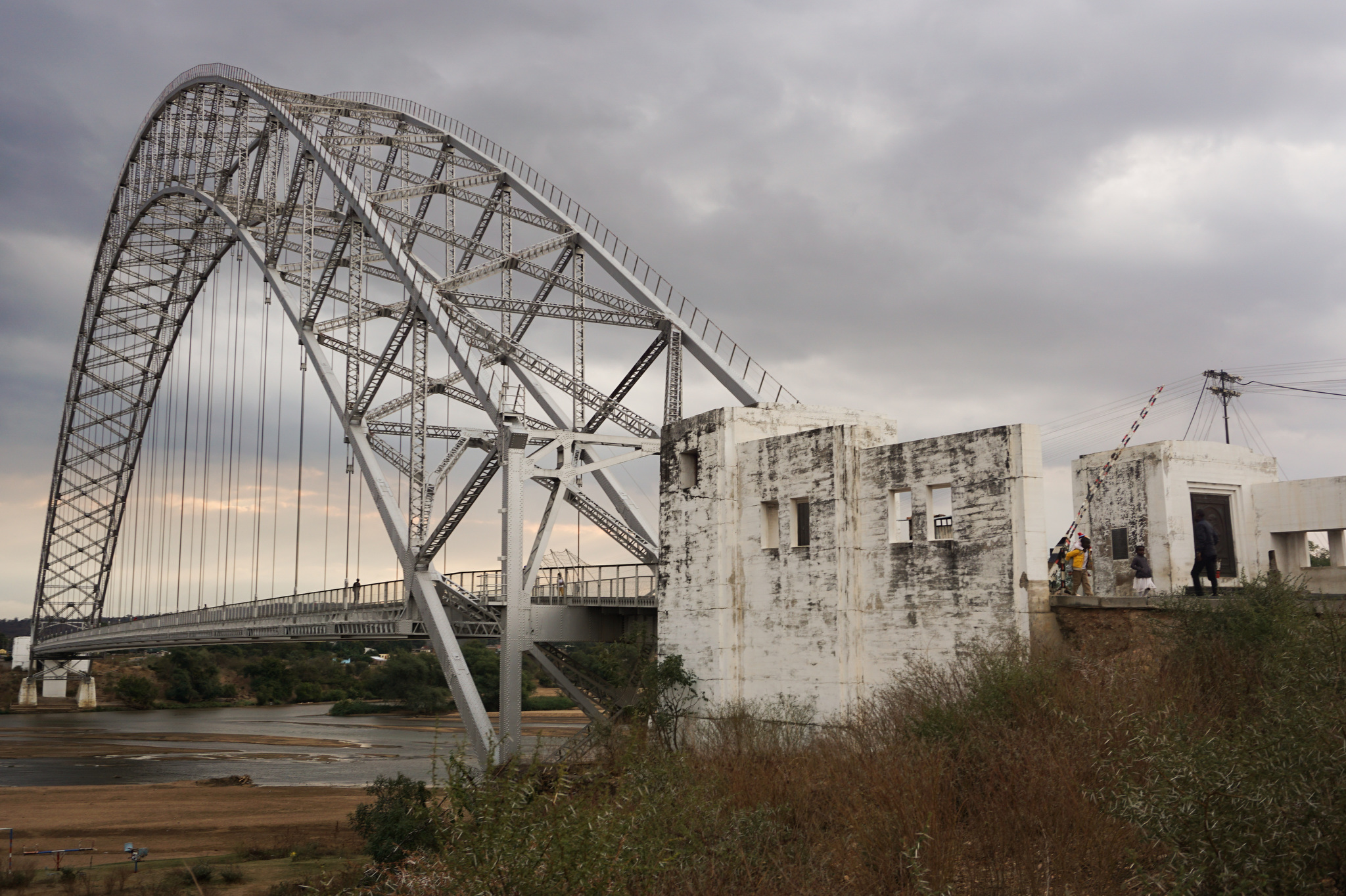Roads in Zimbabwe are a dangerous maze of potholes and crumbling asphalt, and a once-iconic bridge now inspires fear.
Source: Age, Neglect Take Toll On Roads
 EVIDENCE CHENJERAI, GPJ ZIMBABWE
EVIDENCE CHENJERAI, GPJ ZIMBABWE
Built in 1935, the Birchenough Bridge sits 127 kilometers (79 miles) south of Mutare along the Masvingo-Mutare highway. Motorists worry about its safety.
By Evidence Chenjerai
This story was originally published by Global Press Journal. https://globalpressjournal.com/africa/zimbabwe/age-neglect-take-toll-roads/
MUTARE, ZIMBABWE — The Birchenough Bridge, in Manicaland in eastern Zimbabwe, once stood as a national icon. Built in 1935, it was the third-longest single-arch suspension bridge in the world. It was inscribed on Zimbabwe’s 20-cent coin.
Today, its bolts are worn. Some cables are shorn. Unattended cracks and potholes have left many travelers afraid. When they drive over the bridge, it shakes.
A decade ago, the government slashed vehicle weight limits, which forced some truckers to abandon the bridge, long a critical trade link for both this landlocked country and the rest of southern Africa. “The fact that heavy load trucks are no longer allowed to pass is a sign that something is not right with the bridge anymore,” says Theophilus Muyambo, 38, who drives passengers between the bridge and Chipinge, a town about 65 kilometers (40 miles) southeast. “So people are just worried that it may collapse.”
The dilapidated condition of Birchenough Bridge may be the most well-known symbol of Zimbabwe’s national infrastructure crisis. The country’s roads are so run-down that in February, President Emmerson Mnangagwa, with support from his Cabinet, declared that they were in a state of disaster.
The move unleashed 34.3 billion Zimbabwean dollars (about $400 million) to rebuild and repair Zimbabwe’s infrastructure.
The Cabinet noted that “due to extensive damage on roads, some areas have been rendered inaccessible,” says Monica Mutsvangwa, the minister of Information, Publicity and Broadcasting Services. “This state of affairs has adversely affected socioeconomic activities such as distribution of food and inputs and the delivery of important services.”
In its heyday, the Birchenough Bridge was a gateway to ports in South Africa and Mozambique for people sending goods to and from places such as Zambia, Malawi and Democratic Republic of Congo.
Around the country, trade traffic skyrocketed. Rail transport gave way to heavy trucks as the primary method for moving goods. Even now at the Zimbabwe-Mozambique border, more than 100 fuel trucks pass through Mutare, a city in Manicaland province, every day on their way to Zambia.
But potholes scar Zimbabwe’s thoroughfares and highways. Crumbling asphalt, caused by a series of cyclones in recent years, has narrowed many streets. Stories of road-related deaths dominate the news.
The government has repaired potholes using river sand, which washes away during the rainy season. Cracked roads receive patches of tarmac, which often last only a year.
“Most highways are potholed, and there is high risk of accidents as you have to negotiate to avoid the potholes,” says Rindon Chidzvete, 43, of Mutare. Poorly kept roads have ruined his motorcycle’s suspension and compelled him to frequently buy new tires, he says.
By 2011, the Birchenough Bridge itself drew enough concern that the government cut the maximum vehicle load limit by more than half.
Drivers who exceed the 25-ton limit are fined. Paul, who owns a trucking business, says that his vehicles once regularly ferried fresh produce — avocados, potatoes, bananas — over the Birchenough, but the limit has forced him to stop accepting business that requires using the bridge. That means his trucks must sometimes take longer routes.
The bridge’s fragile state also has him worried about his trucks and drivers.
“A lot of truckers have stopped taking loads that go via Birchenough Bridge,” says Paul, who asked not to be fully identified for fear of losing his license. “There is no smoke without fire, and our government is good at reacting when disaster strikes,” but not as good at preventing catastrophes.
Manicaland provincial roads engineer Atherton Zindoga won’t say how often officials inspect the bridge or when they last examined it. But Zindoga says inspections do yield repairs of potholes and other damage.
Old age has diminished the bridge, but Zindoga says drivers and pedestrians shouldn’t worry. “A driver in a truck carrying 25 tons may feel it shaking,” he says, “but not someone in a small car.”
The government’s plan to refurbish Zimbabwe’s roads is an ambitious one. This year, according to the Zimbabwe National Road Administration, the government will repair and restore 27,563 kilometers (about 17,089 miles) of roads, among other improvements.
But as of June 4, according to a statement by Felix Mhona, minister of Transport and Infrastructural Development, the government’s achievements included fixing or bolstering about 3,403 kilometers (about 2,110 miles) of roads.
Zindoga says the government will either renovate the Birchenough Bridge or build another one parallel to it. The government currently doesn’t have enough money for either option but has sought a grant from the Japanese government, he adds.
Muyambo has heard such promises before. In fact, the proposal to build a parallel bridge first surfaced in 2017. And since then, drivers say, the bridge’s condition has further decayed.
“For a long time now,” Muyambo says, “I have not seen any repairs being done on the bridge.”
Evidence Chenjerai is a Global Press Journal reporter based in Mutare, Zimbabwe. She specializes in coverage of environmental justice.
TRANSLATION NOTE
Evidence Chenjerai, GPJ, translated some interviews from Shona.
Global Press is an award-winning international news publication with more than 40 independent news bureaus across Africa, Asia and Latin America.
COMMENTS